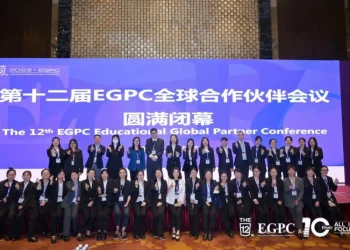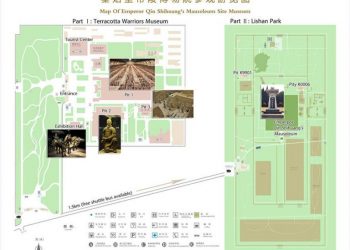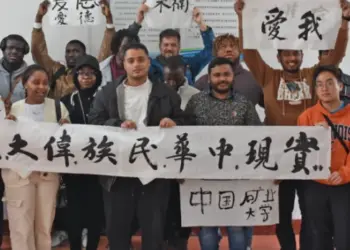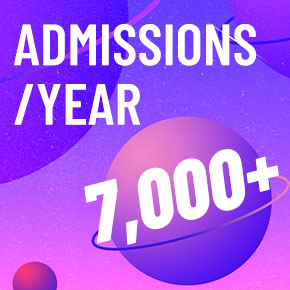As one of the most important part of China’s education, offering education for international students is one of the components of China’s international cultural and educational cooperation and exchange in China. Ever since the opening-up and reform policy started, China has already established the unique administrative model of international education in China. The development of international education has devoted a lot to the promotion of Chinese education, the mutual understanding between Chinese people and others. At the same time, it enhanced the friendship between China and other countries as well as providing trained talents to the social and economic development for the developing countries. Recent years, study in China provides strong support for the construction of “Belt and Road Initiative”. It plays more and more important role for the soft power of China and promotes the international competition and influence of China in the world.
In 1950, a total of 33 international students from east European countries arrived China and started their studies in China. Up till now, China has received more than 5.14 million international students in total. For the past 40 years after the opening-up policy, with the rapid development of China and its education attraction, China has more close ties with all the other countries in education cooperation and exchange. International education in China also achieved great accomplishment as well. In 2018, 492,185 international students from 196 different countries and regions were taking courses at 1004 higher education institutions in China, covering 31 provinces, municipalities and autonomous regions. Compared with that of 2017, the total number increased 3013 and it makes 0.62% of the increase. (Excluding international students in Hong Kong, Taiwan and Macau) China has already become the biggest destination countries in Asia and one of the most important destination countries for international students in the world.
 Among all the international students in China, Asian students take the biggest proportion. In 2018, 295,043 students, or 59.95% are from Asian countries. 81,562, or 16.57%, are African students. For those from Europe, Americas and Oceania countries, the student numbers are 73,618, 35,773 and 6,229 people which take 14.96%, 7.26% and 1.27% respectively.
Among all the international students in China, Asian students take the biggest proportion. In 2018, 295,043 students, or 59.95% are from Asian countries. 81,562, or 16.57%, are African students. For those from Europe, Americas and Oceania countries, the student numbers are 73,618, 35,773 and 6,229 people which take 14.96%, 7.26% and 1.27% respectively.
From the country distribution perspective, the top 10 countries for students study in China are: South Korea, 50,600, Thailand, 28,608, Pakistan, 28,023, India, 23,198, the United States, 20996, Russia, 19,239, Indonesia, 15050, the Laos, 14645, Japan, 14230, Kazakhstan,11,784.
In 2018, 258,122 are taking academic degree courses which take 52.44% of all the international students in China. It is a 6.86% increase compared with that of the 2017, or 16,579 in number of students. Among all of the international students, 85,032 people are taking master or above courses, which increased by 12.28% than that of 2017, among which 25,618 are taking Ph. D courses and 59,444 are taking master courses.
In 2010, in order to implement the Outline of the National Medium- and Long-Term Education Reform and Development Plan (2010-2020), strengthen educational exchanges and cooperation between China and foreign countries and promote the sustained and healthy development of the cause of studying in China, the Ministry of Education has issued the Plan for Studying in China. Since the implementation of the plan, the work of studying in China has adhered to the principle of “expanding scale, optimizing structure, regulating management and ensuring quality“, and the scale and quality of studying in China have been rapidly improved.
After China entered the new era of socialism with Chinese characteristics, the cause of studying abroad in China has entered the stage of development of quality and efficiency. The Chinese government has made it clear that the development of studying abroad in China should focus on quality, strictly regulate and manage and follow the path of intension-style development. The main initiatives taken by the Ministry of Education in recent years are as follows.
Firstly, improve the policy system and manage according to the law. In 2017, the Ministry of Education, together with the Ministry of Foreign Affairs and the Ministry of Public Security, promulgated the Measures for the Administration of the Admission and Training of International Students, which requires all colleges and universities to strictly tighten the entry threshold, conduct qualification examinations for learners who apply to study in China, and ensure that the students enrolled meet the admission standards and strengthen management in accordance with the law.
Secondly, draft national standards to make clear basic norms. In 2018, the Code of Higher Education Quality for International Students Studying in China (Trial) was issued to provide guidance and basis for government management, school running and evaluation, which specifically strengthened the requirements for the recruitment and admission of international students to China, the quality of training, the level of Chinese language and the management of convergence.
Thirdly, adjust government functions and establish quality assurance mechanisms. Encourage third-party industry organizations to carry out quality certification work to study in China, and establish and improve the quality assurance mechanism of incentives, certification and evaluation. At the same time, strengthen management and supervision, carry out supervision and inspection, strict accountability procedures, decrease management loopholes, fight against violations of laws and regulations to ensure the healthy and orderly development of studying in China.
Fourthly, strengthen scholarship management to ensure the quality of training. The implementation of strict selections, unified management, preparatory education, completion examination, annual evaluation and other systems, ensure the quality of training of Chinese government-supported scholarship students
Next, the Ministry of Education will continue to adhere to the quality development of study in China, improve the modern system of governance and management of study in China, innovate working methods, improve management measures, build the “study in China” brand, and effectively improve the quality and management of the quality of study in China.
Note: Excerpt from the “General Introduction of the Department of International Cooperation and Exchange of the Ministry of Education of the People’s Republic of China”and “Quality First to Achieve the Intension of the Development of Study in China – Ministry of Education on the Questions Related to Study in China.”
Source: www.studyinchina.edu.cn






![[Guangxi], 0 Tuition, 0 Dorm, Bachelor Scholarship](https://news.eduprchina.com/wp-content/uploads/2024/07/南宁1-350x250.jpeg)


























This Post Has 0 Comments